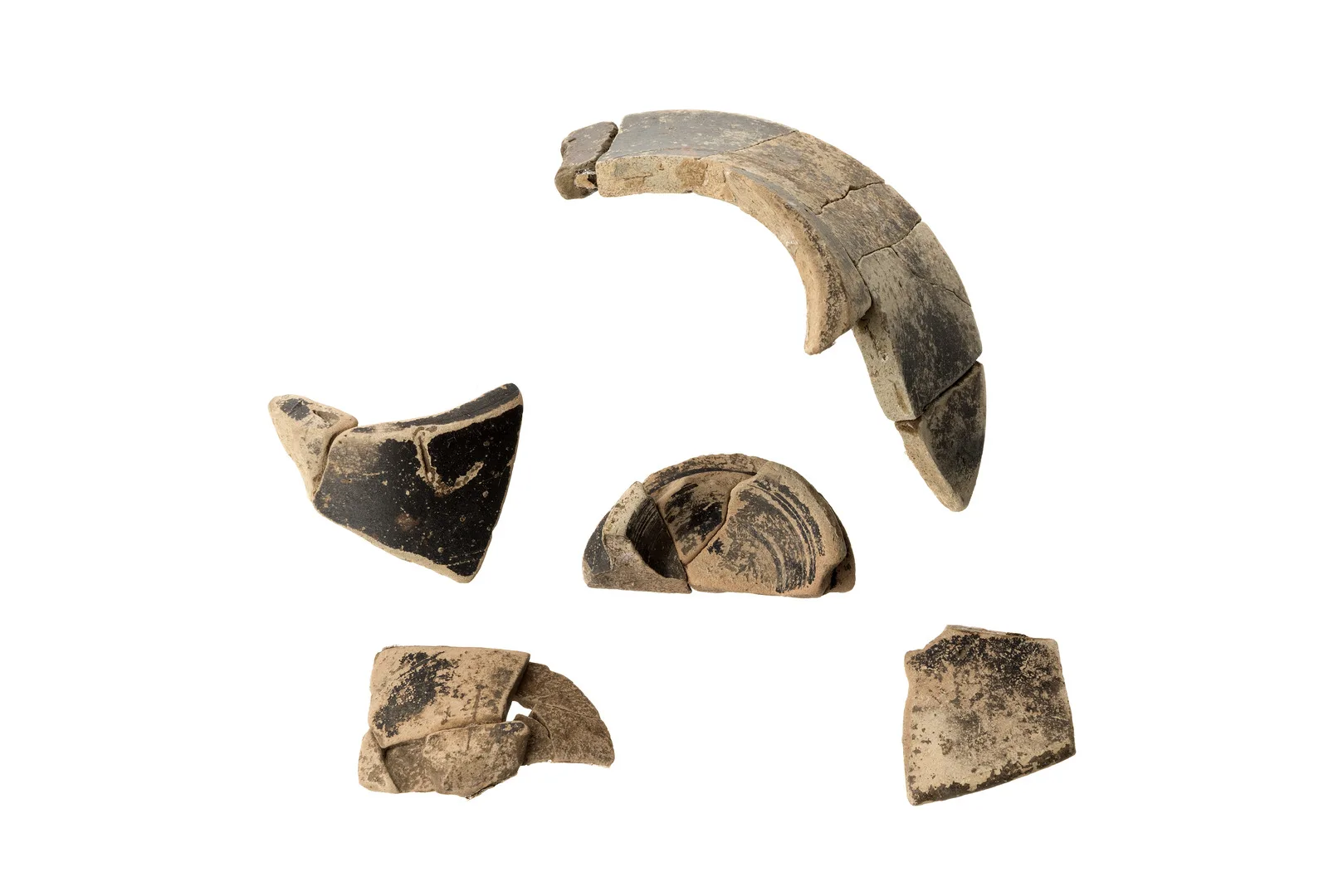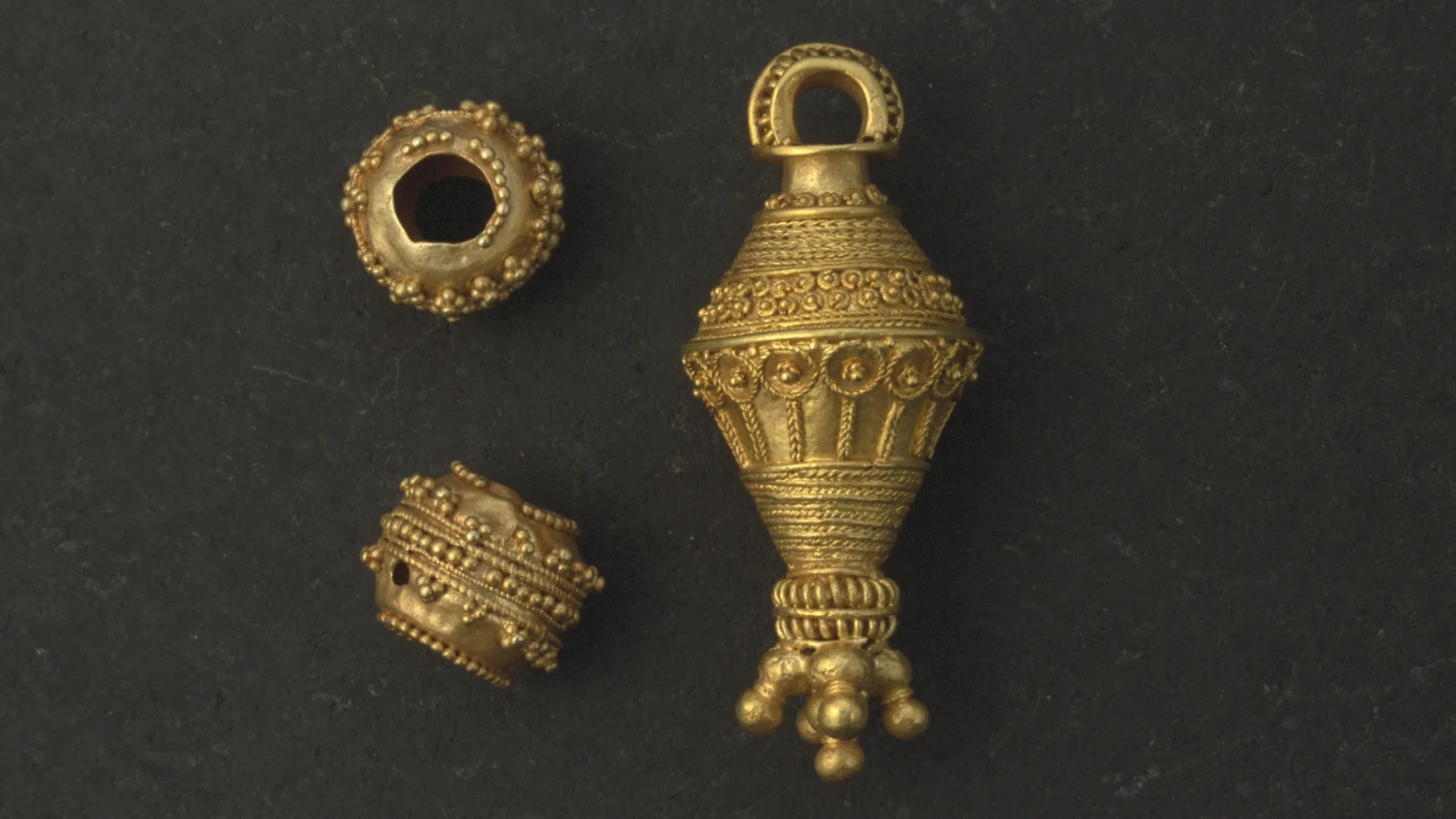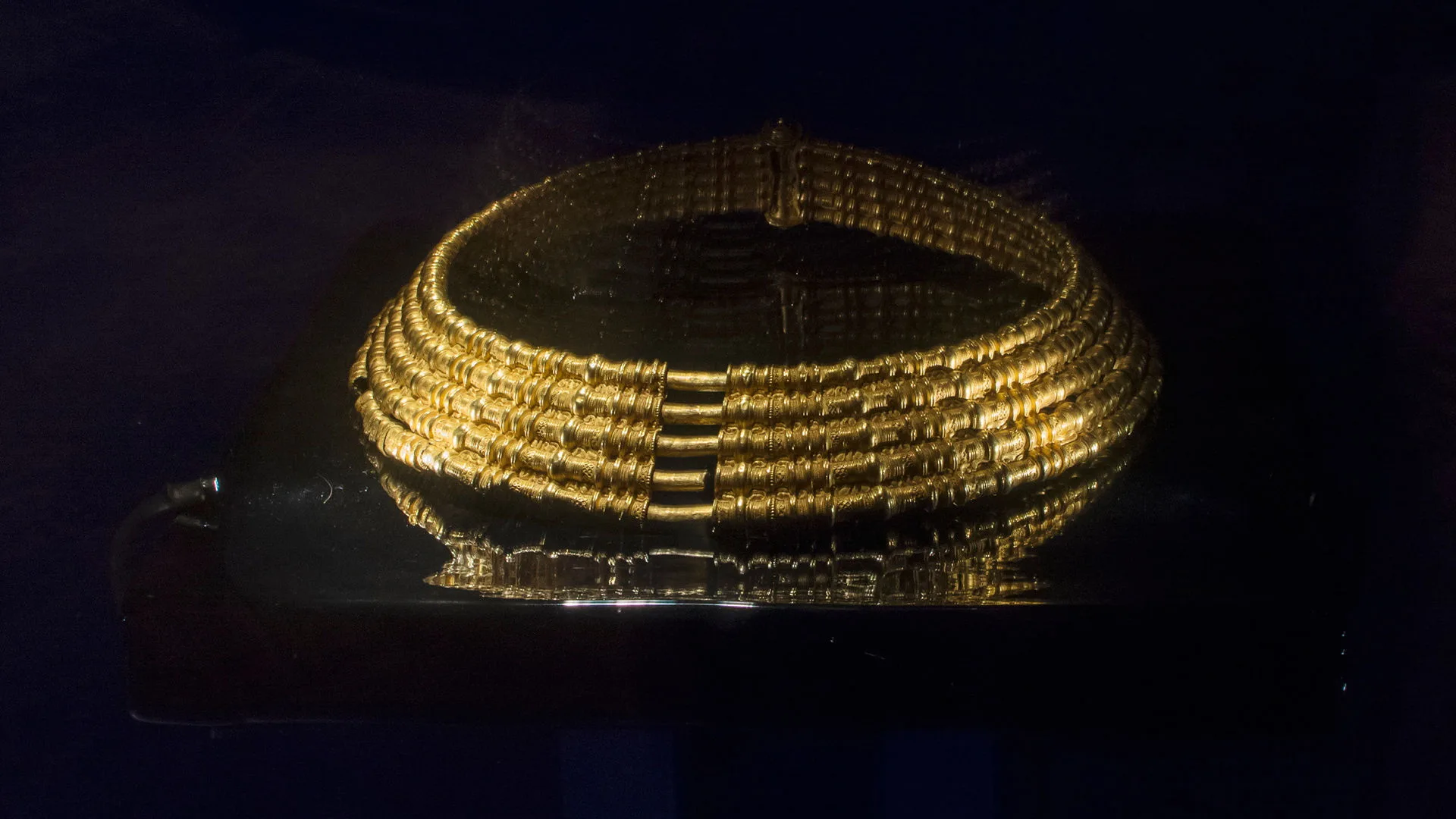An heirloom from the Roman Empire
Bronze Age
1700 BC – 500 BC
Iron Age
500 BC – AD 1100
Viking Age
AD 800 – AD 1100
This distinctive type of pottery was produced in the Roman Empire and its provinces during the centuries surrounding the birth of Christ. The vessels were either wheel-thrown or moulded into standardised forms. They were sometimes decorated with relief patterns, and occasionally with painted motifs. Finds of Terra Sigillata in Scandinavia are exceedingly rare. Other Roman imports, such as glassware and bronze vessels, are more commonly found.
The small pot unearthed in Linköping bears a stamp on its base, allowing us to identify both its origin and its maker. The potter’s name was Cintismus, active in Lezoux in central Gaul between approximately AD 160 and 180.
What makes the find especially intriguing is that other grave goods indicate the vessel was already about 400 years old when it was buried. A truly remarkable heirloom. The grave, which contained the remains of two individuals, an adult and a child or adolescent, dates to the Vendel Period, roughly AD 550–800.






